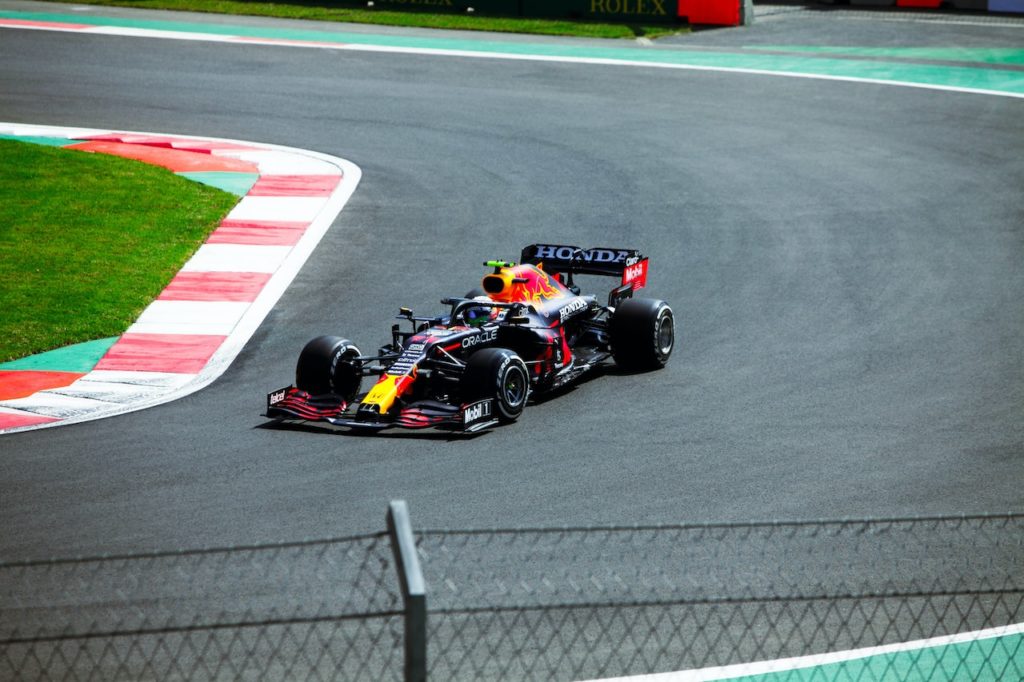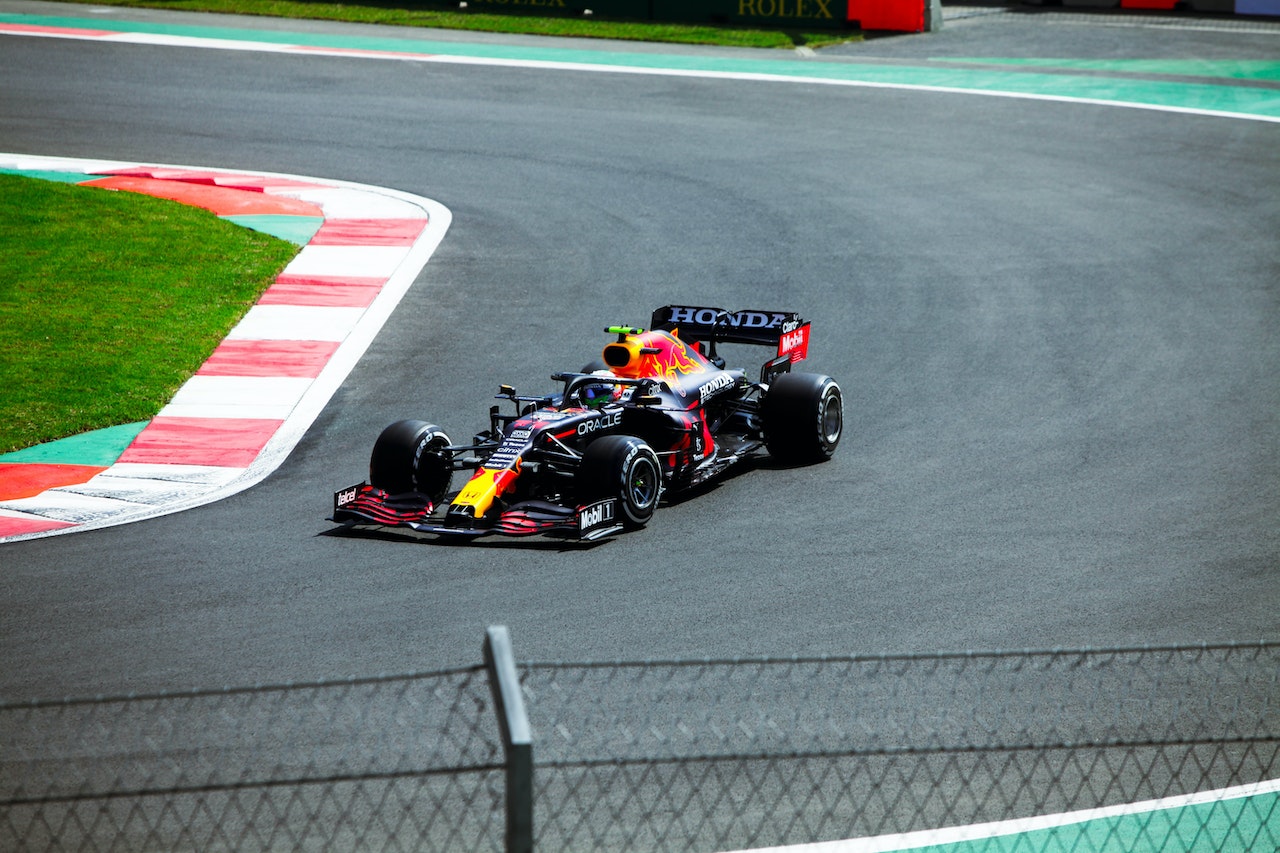
Could a Formula One car drive upside down? Technically yes, but it might need some modifications.
Formula One racing cars are some of the fastest cars in the world. The fastest speed ever reached in a Formula One car is 397.36 km/h. This is not as fast as the land speed world record, which is 1227.985 km/h, but that is not really a car. It is more like a rocket with a seat on top.
The main reason people think a Formula One car can drive upside down is because of the downforce they can produce. The cars have wings at the front and the back to force the air under them, pressing the car to the track. This is so that they can grip, which gives them more speed and lets them turn without having to slow down so much. It is basically the opposite of an airplane wing. An airplane wing forces the air to move faster over the top of the wing than the bottom of it. When the air moves faster, it creates a low-pressure area over the wing and the wing is lifted by the force. A Formula One car does the exact opposite. The air is forced under the wings faster than it is over them, which creates a low-pressure area under the car and the car is sucked to the ground. The faster the car goes, the more downforce is created.
So, could a Formula One racing car drive upside down? Yes, but there are three problems. The first problem is the speed that they would have to reach. The minimum weight of a Formula One car including the driver is set at 789 kg. On top of this is about 110 kg of fuel. (Incidentally, a Formula One car gets about 0.75 km to a liter. A regular family car gets about 28 km per liter.) The downforce for that Formula One car at 130 km/h is equal to the weight of the car. The trouble is, if the car was driving upside down on the top of a tunnel, the weight of the car would be pulling it down due to gravity, so a downforce of the weight of the car would equal to zero, meaning the car couldn’t grip or move. To have enough grip to move, the car would need double the downforce. Downforce doesn’t increase linearly, so the car would only need to increase the speed by 1.4 times to get double the downforce. That means the car only needs to travel at 190 km/h. This is obviously possible because Formula One cars regularly exceed this. Whether or not a driver could do it upside down is another matter.
The second problem is the engine. Formula One car engines are not designed to work upside down. The engine in a Formula One car is far superior to that of a regular car, but it still relies on gravity. The fuel needs to be at the bottom of the fuel tank for the fuel pump to suck it through the fuel line. If the car is upside down, the engine won’t be able to get the fuel. Also, the pistons in the engine are lubricated by oil that is injected under them. The excess oil runs downwards, due to gravity, and is removed. If the car is upside down, this excess oil will drip past the piston, enter the combustion chamber and the whole car might explode. An engine could be altered to work upside down, but it would need some work. The engine in acrobatic airplanes can work upside down, so an adjustment like that would be possible. An electric engine would also solve the problem, but that would add a lot of extra weight to the car.
The third problem would be the tunnel itself. The roof of the tunnel would have to be completely flat, but there would also need to be a corkscrew ramp leading up to it. Formula One cars have a staggering amount of downforce, but they can still flip. If one of the wheels lifts off the ground and exceeds 2 degrees, the downforce will become lift. This is why Formula Cars flip sometimes. For the attempt to drive upside down, the ramp to the tunnel must be constructed so that all four wheels of the Formula One car are on the ground at all times, so as not to get any lift.
So, could a Formula One car drive upside down? It would take a fair bit of work to get a car ready for a feat like this, but it is possible. However, the risk to the driver would be great. Crashing down from the roof of a tunnel while upside down would be extremely dangerous. If an experiment like this is to take place, then it makes sense to try it with a driverless car first. And this is what I learned today.
Sources
https://www.carthrottle.com/post/the-science-behind-somersault-crashes-and-dangerous-aero/
https://afdc.energy.gov/vehicles/how-do-gasoline-cars-work
https://commons.erau.edu/cgi/viewcontent.cgi?article=1003&context=aiaar2sc
https://www.motorsport.com/f1/news/insiders-guide-f1-engine-rules/7221310/
https://www.autosport.com/f1/news/how-much-does-an-f1-car-weigh/10246442/
https://www.grc.nasa.gov/www/k-12/UEET/StudentSite/dynamicsofflight.html
https://f1chronicle.com/how-do-formula-1-cars-generate-downforce-f1-tech/
https://bleacherreport.com/articles/1752888-can-a-formula-1-car-drive-upside-down
https://en.wikipedia.org/wiki/Formula_One

